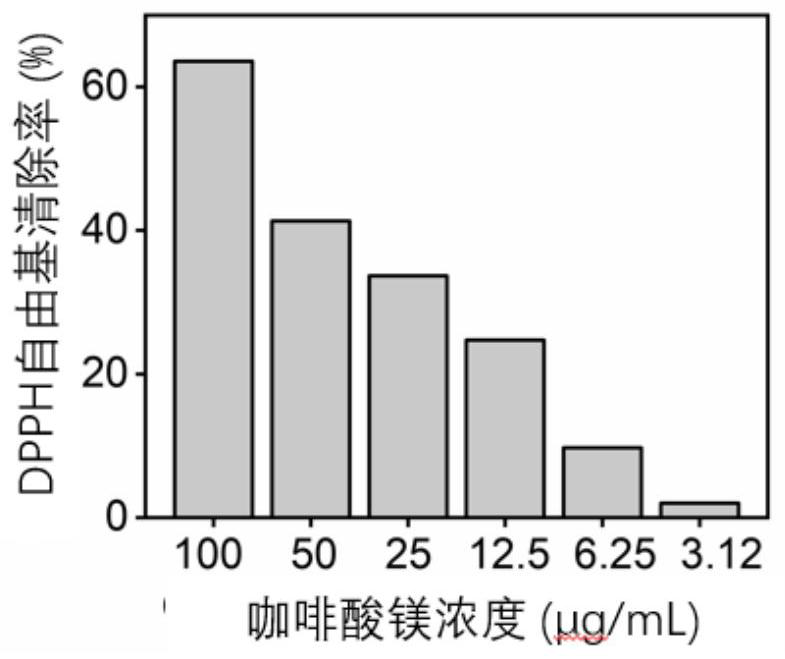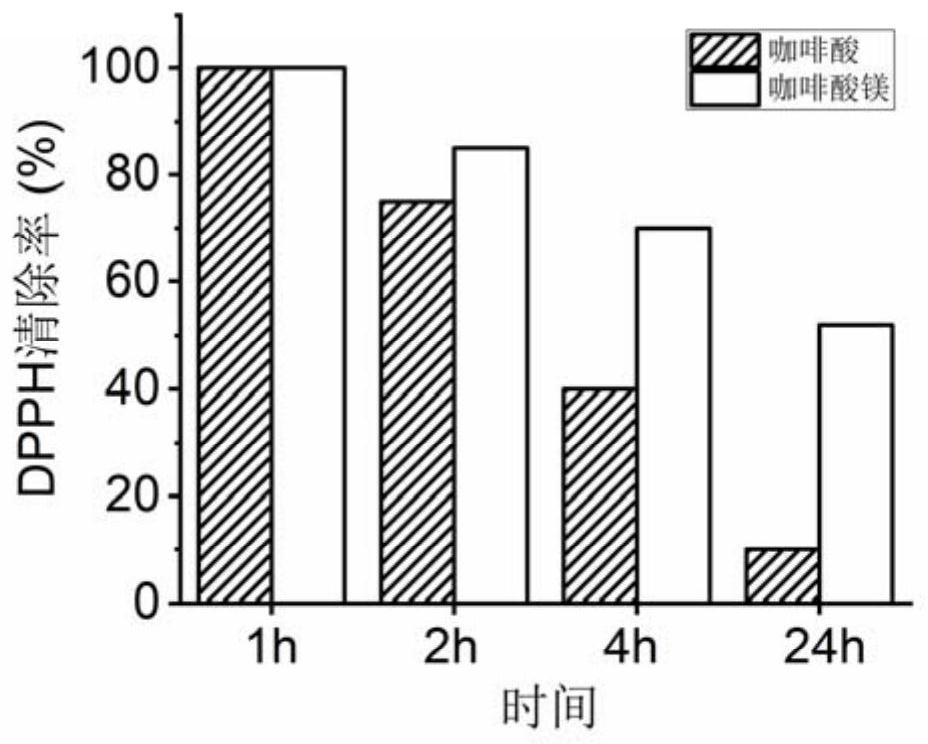Preparation of caffeic acid or caffeic acid derivative metal chelate nanoparticles and application thereof
A metal chelate and nanoparticle technology, applied in the field of medicine, can solve problems such as inability to achieve long-term treatment, and achieve the effects of promoting wound healing, reducing cell calcification, and reversing cell apoptosis
- Summary
- Abstract
- Description
- Claims
- Application Information
AI Technical Summary
Problems solved by technology
Method used
Image
Examples
Embodiment 1
[0028] The present embodiment provides a preparation scheme for the preparation of magnesium caffeate, and the specific steps are as follows:
[0029] a Dissolve 90mg of caffeic acid in a mixed solution of 50ml of ethanol and water (volume ratio 1:1), stir until completely dissolved, and mark it as solution A.
[0030] b Dissolve 105 mg of magnesium chloride hexahydrate in the above solution A, stir until completely dissolved, and mark it as solution B.
[0031] c Adjust the pH value of solution B to 10.1, and mark it as solution C.
[0032] d Solution C was reacted in a water bath at 4°C for 20 minutes, then washed twice with deionized water and twice with alcohol, and freeze-dried by a freeze dryer to obtain a dark brown product, which was named magnesium caffeate nanoparticles.
Embodiment 2
[0034] The present embodiment provides a preparation scheme for the preparation of calcium caffeate, and the specific steps are as follows:
[0035] a Dissolve 90mg of caffeic acid in a mixed solution of 50ml of ethanol and water (volume ratio 1:1), stir until completely dissolved, and mark it as solution A.
[0036] b Dissolve 165mg of anhydrous calcium chloride in the above solution A, stir until completely dissolved, and mark it as solution B.
[0037] c Adjust the pH value of solution B to 10.1, and mark it as solution C.
[0038] d Solution C was reacted in a water bath at 4°C for 20 minutes, then washed twice with deionized water and twice with alcohol, and freeze-dried by a freeze dryer to obtain a dark brown product, which was named as calcium caffeate nanoparticles.
Embodiment 3
[0040] The present embodiment provides a preparation scheme for the preparation of iron caffeate, and the specific steps are as follows:
[0041] a Dissolve 90mg of caffeic acid in a mixed solution of 50ml of ethanol and water (volume ratio 1:1), stir until completely dissolved, and mark it as solution A.
[0042] b Dissolve 165 mg of anhydrous ferric chloride in the above solution A, stir until completely dissolved, and mark it as solution B.
[0043] c Adjust the pH value of solution B to 10.1, and mark it as solution C.
[0044] d Solution C was reacted in a water bath at 4°C for 20 minutes, then washed twice with deionized water and twice with alcohol, and freeze-dried by a freeze dryer to obtain a dark brown product, which was named iron caffeate nanoparticles.
PUM
 Login to View More
Login to View More Abstract
Description
Claims
Application Information
 Login to View More
Login to View More - R&D
- Intellectual Property
- Life Sciences
- Materials
- Tech Scout
- Unparalleled Data Quality
- Higher Quality Content
- 60% Fewer Hallucinations
Browse by: Latest US Patents, China's latest patents, Technical Efficacy Thesaurus, Application Domain, Technology Topic, Popular Technical Reports.
© 2025 PatSnap. All rights reserved.Legal|Privacy policy|Modern Slavery Act Transparency Statement|Sitemap|About US| Contact US: help@patsnap.com



